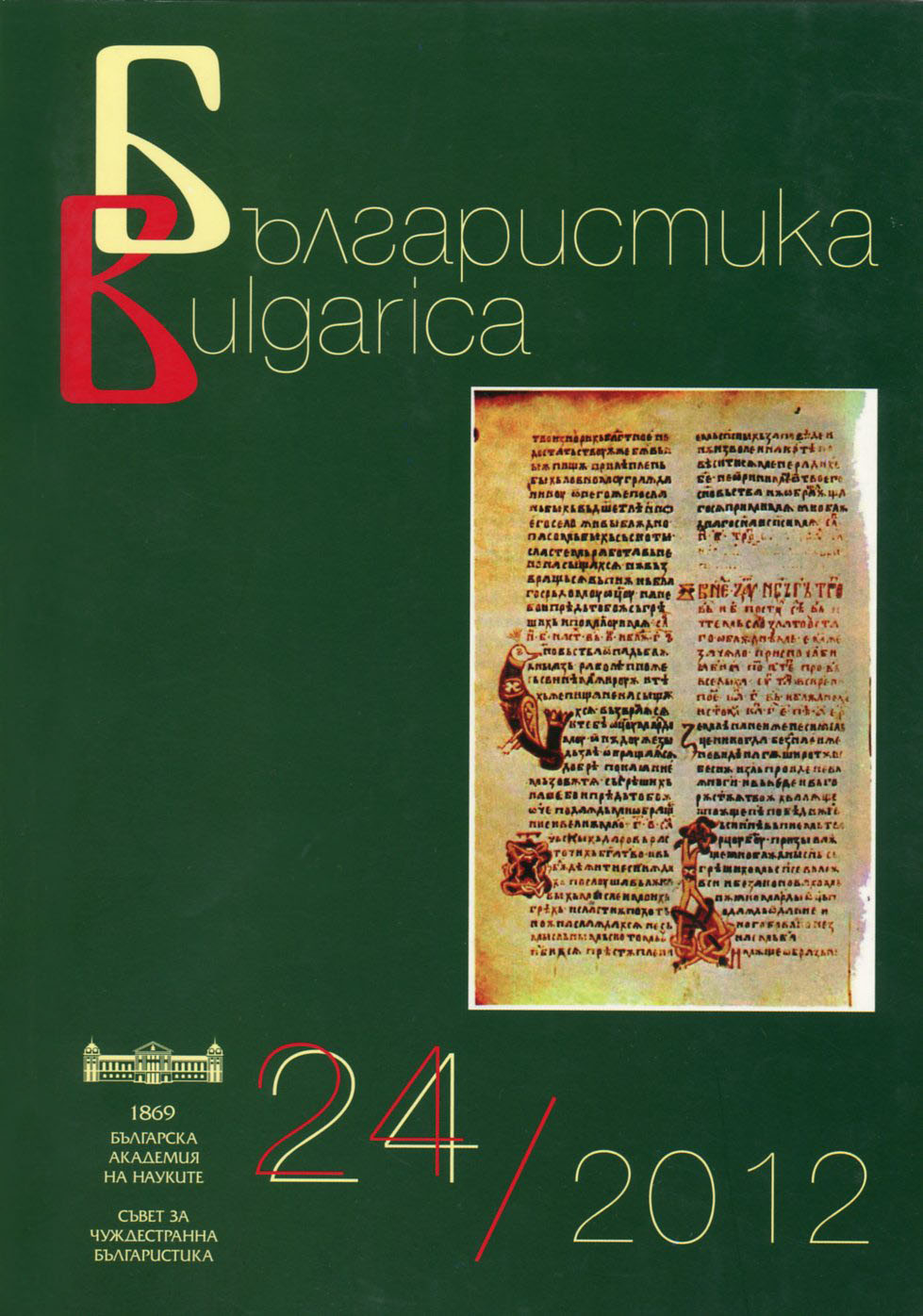
We kindly inform you that, as long as the subject affiliation of our 300.000+ articles is in progress, you might get unsufficient or no results on your third level or second level search. In this case, please broaden your search criteria.

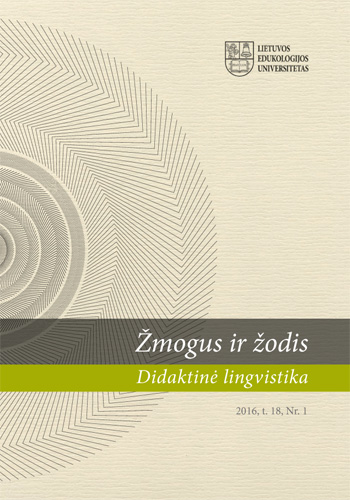
The purpose of the article is to evaluate the influence of the 18th century great German colonization, Germanisation and the related bilingualism (Lithuanian and German) on the Lithuania Minor anthroponyms that functioned in the 18th-19th centuries. The object of the study is anthroponyms of the most intensely colonized counties (Įsrutis and Ragainė) of Lithuania Minor, inscribed in manuscript church books of christening, marriages, confirmation and death registration in the 18th-19th centuries, which are currently stored at the central archive of evangelicals (Berlin, Germany) and the funds of Lithuanian National Martynas Mažvydas Library. The study has justified that the situation of bilingualism played a crucial role in the assimilation of Lithuania Minor residents (Įsrutis and Ragainė counties). It has been found that such a situation prevailed until late 19th century in the region (Įsrutis and Ragainė counties). The analysis of anthroponym versions evidences superstratic impact of the German language dialects on the anthroponyms of local people and substratic impact of the Lithuanian language on the German anthroponyms. There were features of the Germanisation (orthographic and phonetic Germanisation methods) of local people’s anthroponyms in the 18th century, though these Germanisation cases were not regular: only a few surnames Germanised in the aforementioned methods were found. Thus, rare cases of orthographic and phonetic Germanisation should be evaluated in the extralinguistic context – different genders of the same surname could be written in the documents due to insufficient Lithuanian language knowledge of priests. Obvious consequences of Germanisation process of local people’s anthroponyms was manifested in late 19th century, when the structure and formation of surnames were strongly affected. Various structures of surname genders without endings were established, e.g., Markß, Maʒeik, Skalik, Woicʒul, female surnames also lost their typical methods of formation and became the same as male surnames, i.e. surnames with the Germanised suffix -eit (Lith. -aitis) were established, e.g., Abromeit, Joneleit. On the other hand, in the early 18th century names and surnames of German newcomers sometimes took Lithuanian elements. However, German acronyms in general were not Lithuanianised. Sporadic cases of sound substitution (German. f – Lith. p, Ger. ch– Lith. k), as well as addition of Lithuanian endings, illustrating the influence of the Lithuanian language, are assessed as a result of foreign lexeme adaptation in the Lithuanian linguistic area.
More...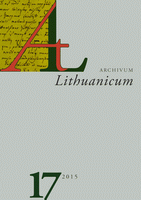
Mit Nehrungskurisch wird in der deutschsprachigen sprachwissenschaftlichen Literatur die auf kurländisch-lettischen Dialekten basierende Sprache bezeichnet, die von den Bewohnern – in erster Linie Fischern – auf der Kurischen Nehrung und daran angrenzenden Gebieten bis ca. 1958 gesprochen wurde. In der litauischsprachigen Literatur hat sich dafür der Terminus kuršininkų kalba bzw. kuršininkų tarmė, in der lettischen – kursenieku valoda eingebürgert.
More...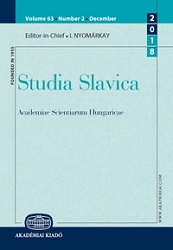
The Hungarian words komor ‘gloomy’ and komoly ‘serious’ are of unknown origin. The present paper aims to elucidate this question from various angles: it gives an overview of what the Hungarian etymological dictionaries say on this topic, shows that komoly is a relatively late development out of komor, spread by the language reformers (especially by Ferenc Kazinczy) at the end of the 18th century, and presents the attempts to prove the Turkic origin of komor. Finally, it offers a Slavic etymology based on the Slavic stem *chmur-, demonstrates that semantically the two words match perfectly, and dissolves the phonological doubts that may arise at first sight.
More...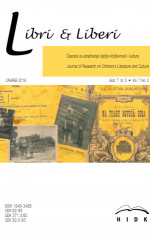
Orthographic, grammatical and lexical norms at the beginning of the 20th century in Croatia were codified by normative works largely in line with the concepts of the Croatian Vukovians, grounding their linguistic views on the works of Vuk Stefanović Karadžić. The language practice, however, still retained certain older distinctive linguistic features typical of the Zagreb School of Philology. The paper analyses Croatian Tales of Long Ago from that perspective, as a document of the state of the language and orthography at the time. The starting point of the research is the third edition dated 1926, the last one published during the author's life, also authorised. Having in mind opposite language conceptions, certain linguistic peculiarities of this edition are pinpointed, focusing primarily on the changes caused by language policy and introduced in relation to the previous manuscripts, typed versions and two printed versions (the critical edition of 2011 lists all the differences between them), but also including other relevant features. Linguistic analysis includes orthographic, phonological, morpho(no)logical, syntactic and lexical levels.
More...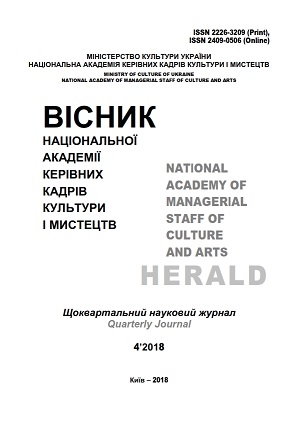
(до ювілею КОМІСАРОВА Олега Вадимовича, професора Національного педагогічного університету імені М.П. Драгоманова,члена-кореспондента Української технологічної академії, заслуженого діяча мистецтв України) / The creative work of the outstanding scientist and artist (to the anniversary of Komisarov Olegh Vadymovych, Professor of the Drahomanov National Pedagogical University, Corresponding Member of the Ukrainian Academy of Technology, Honored Artist of Ukraine)
More...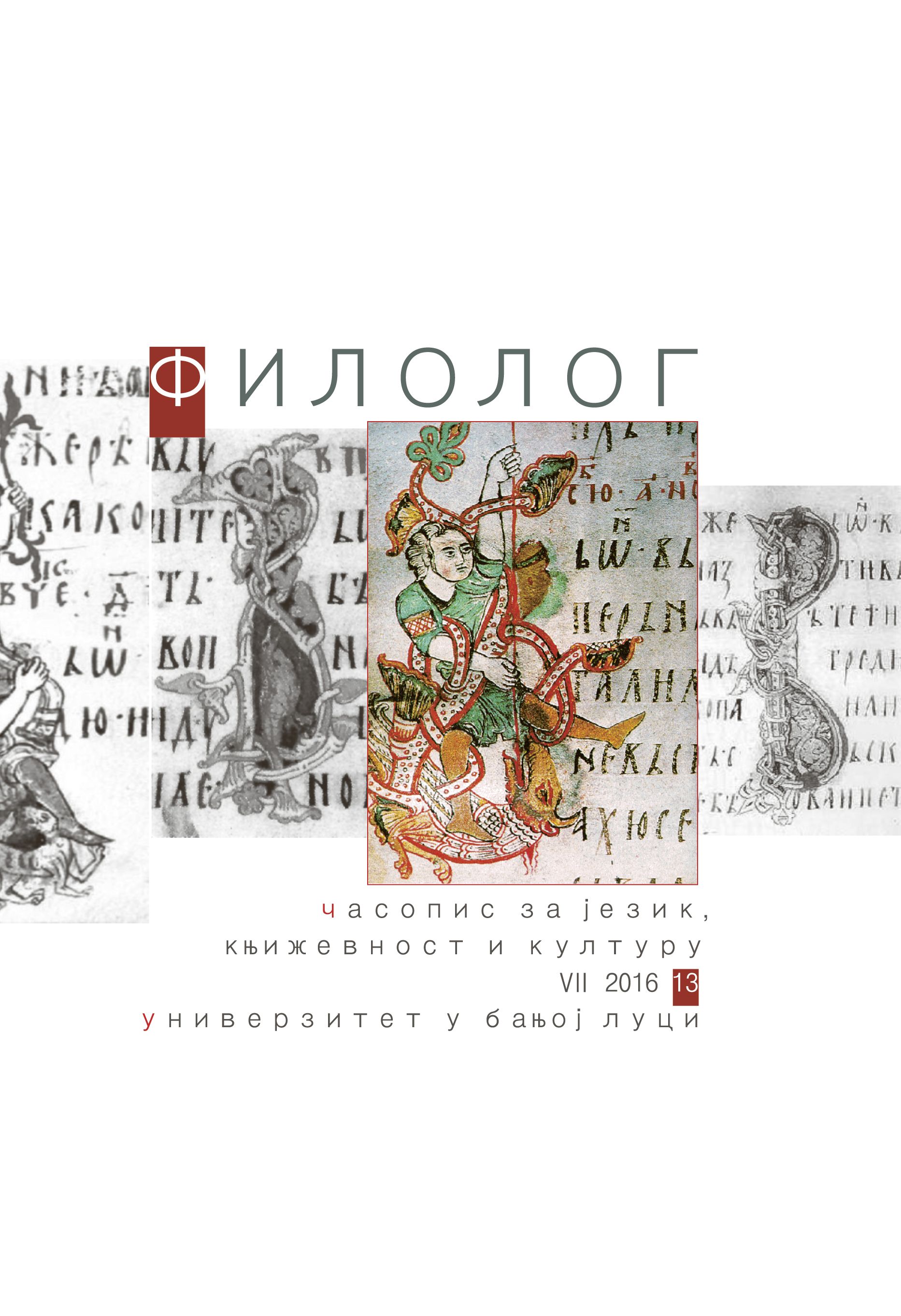
This paper deals with the use of reflex of Proto-Slavic compounds *ъ̯ r̥, *ь̯ r̥, *ъ̯ l̥, *ь̯ l̥ in the first edition of the old Russian poem The Tale of Igor’s Campaign. Graphically, the reflexes were groups that consisted of combinations of letters for denoting semivowels (ъ, ь) or/and vowels o and e with liquid sonants (r and l). The primary attempt was to reconstruct, as much as possible, how these groups were written in the protograph of the poem, to which the overview of the manner of their writing on old Russian monuments contributed. However, the paper is based on the systematisation, classification and statistic processing of all words containing the aforementioned groups in the literary work researched. They were written in accordance with the principles of etymology, phonetics, or the borrowed, South-Slavic principle. Additionally, morphological and etymological analysis clarified the cases of non-etymological usage of these graphical groups, as well as the cases when the graphical form of the word did not point to the etymological presence of the reflexes processed.
More...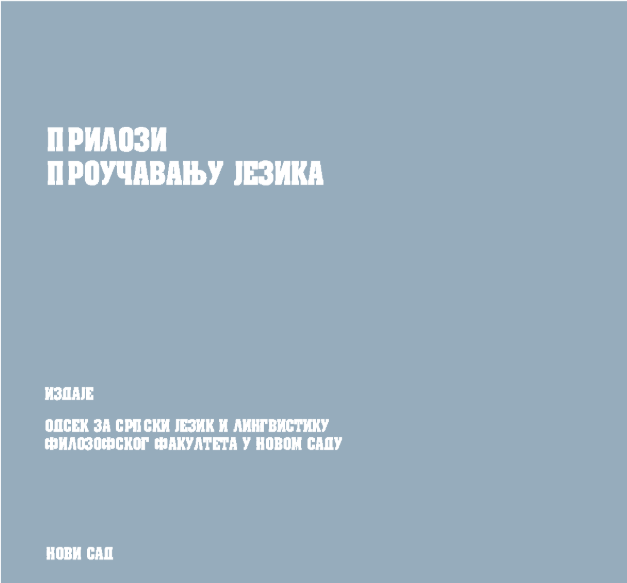
In this paper we observe the accent shift to proclitic in the village of Batkuša, whose speech belongs to the northeastern region of the Herzegovina-Krajina dialect. This research included accent shift to proclitic of all types of words which participate in this process, and it has been observed by the types of words and the types of shift. The aim of this paper is to show how much the accent shift to proclitic in speech of the village of Batkuša is living phenomenon, in which categories it appears and to what extent, whether there is a tendency to abandon this occurrence, which linguistic and extra-linguistic factors affects its consistency, and how does it relate to situations in neighboring speeches and distant Serbian speeches. The analysis shows that the situation in Batkuša’s speech, when it comes to the intensity of the accent shift to proclitic and the categories in which it occurs, is very close to the condition familiar to most of the speeches of the Herzegovina-Krajina dialect.
More...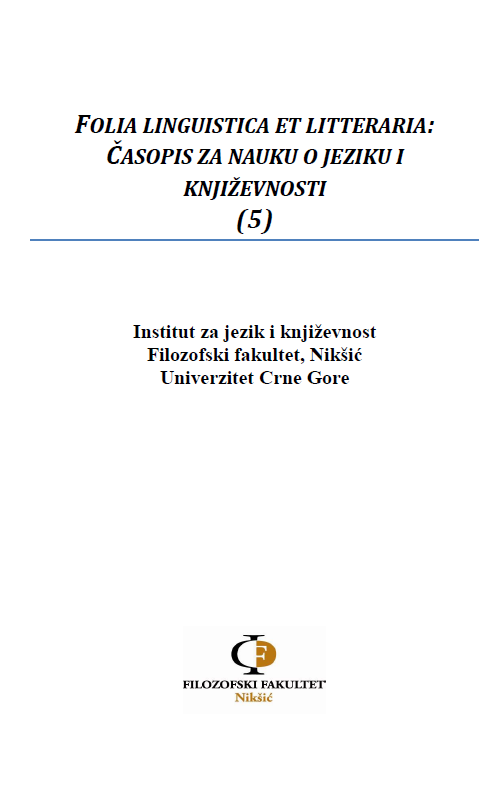
Language contacts can be studied in three directions: language acquisition; b) language borrowing; c) translation. In this paper all three directions are investigated. The process of language borrowing is analysed on four levels: the phonological, the morphological, the semantic and the syntactic levels. The adaptation of a model (a foreign word) shows two kinds of changes: primary and secondary changes which take place on all four levels. The adaptation on the quoted levels is carried out according to the three types of transphonemization (zero, compromise and free), three types of transmorphemization (zero, compromise and complete) and according to the degree of the change of meaning on the semantic level.
More...
Cette contribution aborde les caractéristiques linguistiques et stylistiques de l’ouvrage Fala od sveti aliti govorenja od svetkovina zabiliženi priko godišta (Eloges des saints ou bien discours de fête notés au long de l’année) de Stipan Margitić, franciscain de Jajce, publié à Venise en 1708. L’accent est mis surtout sur les aspects syntaxiques et lexicaux de cet ouvrage, entre autre aussi parce que ses caractéristiques graphiques, phonologiques et morphologiques ont déjà été bien abordées par Slavko Vukomanović dans sa monographie Jezik Stipana Markovca Margitića (La langue de Stipan Markovac Margitić, Belgrade 1971). Là se trouvent analysées aussi les caractéristiques qui correspondent aux traits linguistiques et stylistiques des autres ouvrages des écrivains de Bosnie-Herzégovine du XVIIe et du XVIIIe siècles, en particulier celles qui proviennent des finesses du parler de la région natale de Margitić, à savoir de Jajce, de même que les caractéristiques qui mettent en relief la beauté exceptionnelle de l’expression littéraire de Margitić et qui lui réservent une place distinguée parmi les meilleurs écrivains franciscains de Bosnie du XVIIIe siècle.
More...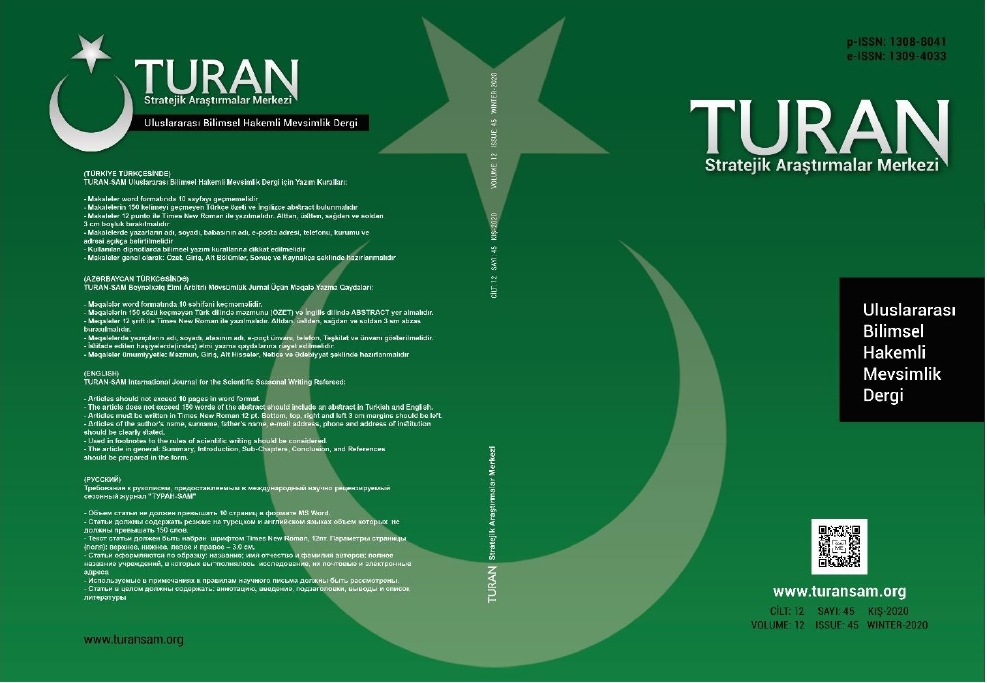
Only a small part of the vocabulary of Göktürk and Uyghur languages is reflected in old written Turkish monuments, especially in the Göktürk inscription. There are many ideas with the idea that the Göktürk writings are very small in the dictionary and are too small for this. The texts of the Göktürk writings contain about 4,000 words and it is said that the texts of the old Uighur inscriptions are large according to the volume and even the most comprehensive works of art are included. For this reason, it is true that the old Uighur literary language has been well preserved until today. The vocabulary of ancient Turkish writing is so rich that it can be mentioned as an auxiliary material to study the dictionary structure of modern Turkish languages, as well as an independent language dictionary. Folk words and expressions form the basis of the vocabulary of old Turkish inscriptions. Most of the words used in old Turkish languages are preserved and used in modern Turkish. In some of the old Turkish words, the phonetic content remains the same, but is semantically expressed. In some, both its meaning and phonetic structure remained the same, while some words were used in ancient inscriptions, they were archaic for contemporary Turkish languages. In other words, there are words that do not leave marks in modern Turkish languages.
More...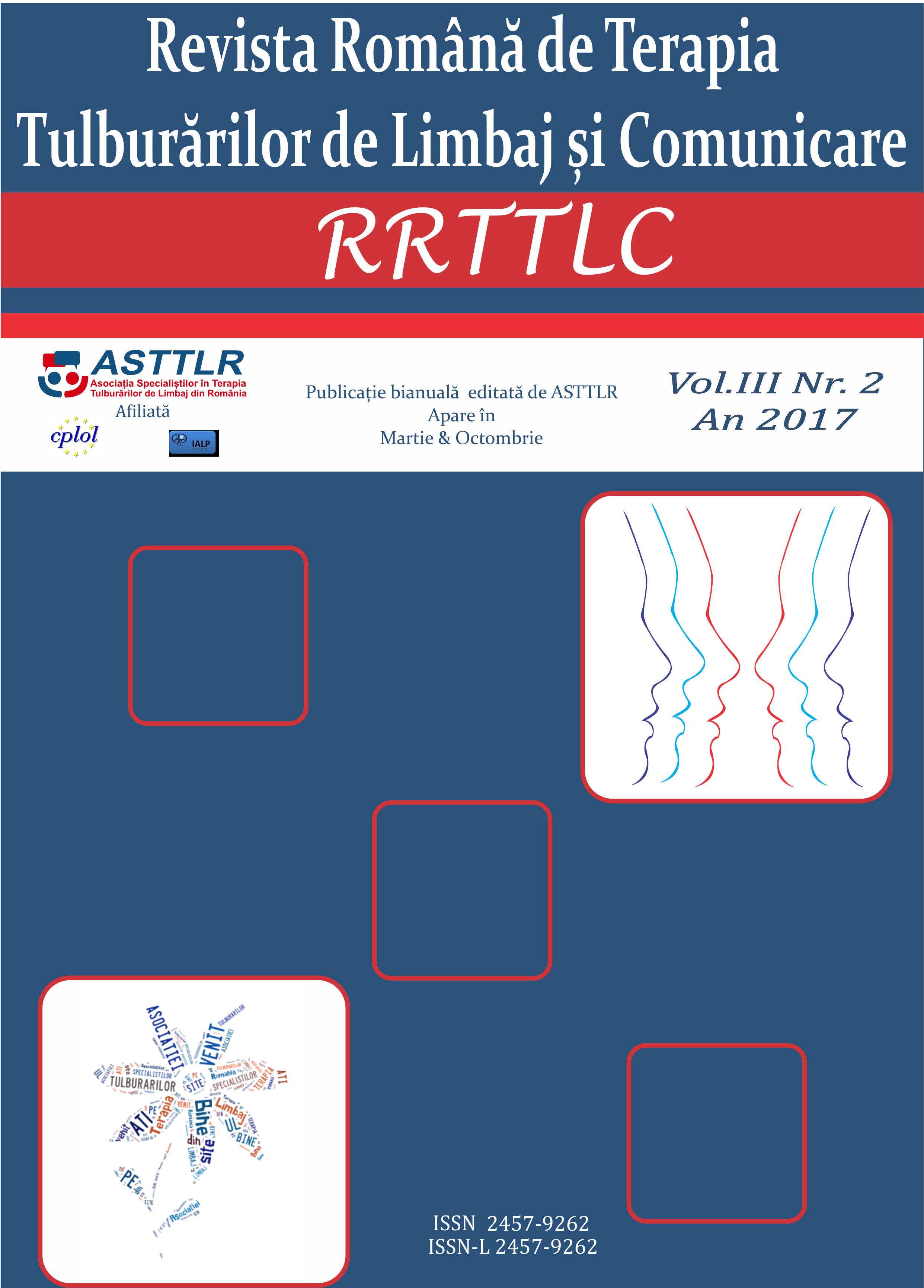
This paper focuses on the importance of early intervention on language development in children with ataxic dysarthria, taking into account that they face various breathing, articulation, phonetic, resonance and suprasegmental difficulties. Coordination disorders, difficulties in walking, abundant salivation, low muscle tone and jerky speech are also known disorders met in ataxic dysarthria.All these disorders have a negative impact on the quality of life of the individuals diagnosed with this condition, so early intervention is necessary.This paper aims to bring forward an approach based on developing the suprasegmental component of communication, the abilities of immediate imitation, focused attention, establishing visual contact, developing the phono articulatory apparatus mobility using classical exercises as well as orofacial stimulation (Morales Technique and using special instruments – Sensory therapy instruments, Z-vibe – an instrument with vibrations), developing breathing, articulation, phonetic and resonance skills, developing active vocabulary, taking into account the final aim, developing a functional and efficient communication.
More...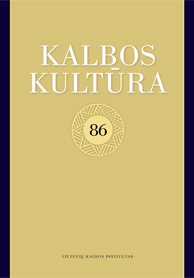
The article deals with the compound constructional terms in scientific literature, published between 1918 and 1940. In Lithuania, during the interwar period, the construction sector was rapidly expanding, there were many new realities, which called for many new terms, including compounds. Exclusive personalities were very important for the development of construction terms of this period and for the formation of this professional language: Kazimieras Vasiliauskas, Jonas Šimoliūnas, Pranas Morkūnas, Anatolijus Rozenbliumas, Pranas Jodele, Jonas Kiškinas, Juozas Gabrys and others. Not only did these construction engineers carry out significant research, writing articles and books, teaching young people, but also enriched construction terminology. Quantitative data of related terms from 33 scientific papers and articles on construction indicate that during the interwar period compounding was an important way of developing construction terms: in the literature read, 262 related compound terms were found. The German equivalents presented in addition to some of the compounds make the assumption that the Lithuanian compounds are to be regarded as partial or full evaluations. Although general types of Lithuanian compound terms are characterized by the same major types of compounding found in the the present Lithuanian language, analyzing the period from 1918 to 1940 construction terminology compounds, it is determined that they are made according to 10 types of production.
More...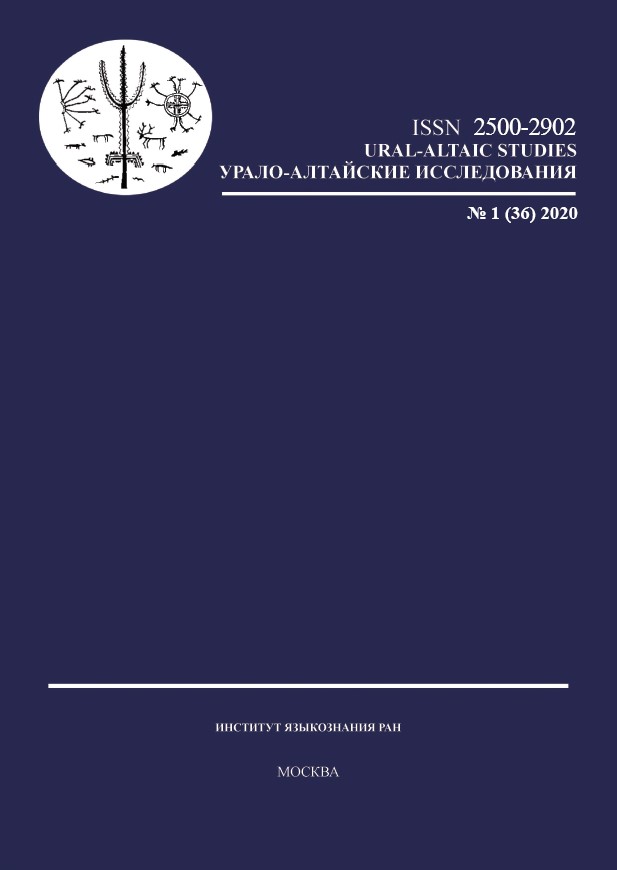
This article examines the nominal morphologic characteristics of the translation of “God’s Law” into the Udmurt language. The relevance of the study lies in the fact that Udmurt written monuments have not yet been thoroughly studied. Thus far more than 400 prerevolutionary Udmurt monuments have been found, but most of them have not been described. It is necessary to analyze those written monuments, as they provide important information for language reconstruction and help determine the chronology of linguistic phenomena. The description of morphological characteristics in the article is based on previously identified graphic and phonetic features of the translation of “God’s Law” into Udmurt. Its linguistic material is compared with data from literary language and modern Udmurt dialects. Having analysed “God’s Law” in the Udmurt language, some features were revealed in the design of morphological indicators of the plural, possessiveness and some case forms. However, in general, the analysis showed that at the level of nominal morphology the text is archaic in character, as only three features that distinguish the language of the monument from the literary Udmurt language and most modern dialects were identified. A comparison of the linguistic data of “God’s Law” with the literary language and modern Udmurt dialects does not contradict our hypothesis regarding the dialectic affiliation of the written source, when it is considered that all of the identified innovative features are present in the modern Middle-Cheptsa dialect of the northern dialect of the Udmurt language.
More...
The article presents an analysis of a previously unpublished Mansi dictionary, which was discovered in A. M. Sjögren holding of St. Petersburg Branch Archive of the Russian Academy of Sciences. Its authorship, the place and time of its creation are unknown. The attention can be drawn to the fact that the wordlist coincides with the dictionaries by P. S. Pallas, which were collected in the 18th century. However, in the book by P. S. Pallas “Comparative Dictionaries of all Languages and Dialects Collected by the Right Hand of the All-Important Person” (Saint Petersburg, 1787—1789), these materials are missing for some unknown reason. The article presents the results of the analysis of the dictionary’s features concerning dialectal differentiation in comparison to other dialects of the Mansi language. The text was studied according to its graphical and phonetical features as well as according its dialectal differentiation. This fact and the addition of a comparative analysis of the dictionary with the modern information obtained in the fieldwork permit establishing that the language of the dictionary has an affinity with the Konda (earthern) and Middle-Ob (northern) dialect (the transition of Proto-Mansi *k into x before Proto-Mansi back vowels, the reflex of *ɣ before consonants and at the end of a word). This is confirmed by the lexical isoglosses common with the dialect, recorded near the river Beryozovaya and presented in the dictionary by P. S. Pallas. But in the dictionary a special form of conjugation is marked, which was previously described only for western dialects. The dictionary also shows the archaic preservation of the Proto-Mansi *š that turns into s in the northern Middle-Ob and Sosvinsky dialects, and Proto-Mansi *ɣ in the intervocal position that turns into w in all dialects except for the western Lozvinsky.
More...
Review of: Vadim V. Dyachkov - Рецензия на книгу: Элементы татарского языка в типологическом освещении. Мишарский диалект Ред. С. Г. Татевосов, А. Г. Пазельская, Д. Ш. Сулейманов. — М.: «Буки Веди», 2017. xxviii + 761 с. ISBN 978-5-4465-1693-3. / ELEMENTY TATARSKOGO YAZYKA V TIPOLOGICHESKOM OSVESHCHENII [ELEMENTS OF THE TATAR LANGUAGE IN A TYPOLOGICAL PERSPECTIVE] (MOSCOW, 2017. XXVIII + 761 PAGES)
More...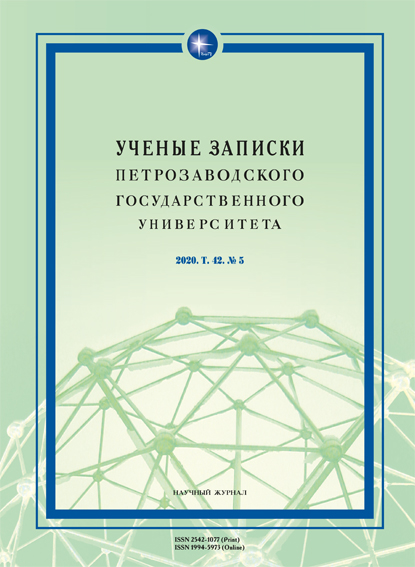
The article discusses the processes of formal adaptation of loanwords borrowed from European languages into Russian during the XVI and the XVII centuries. The paper deals with the specific features of phonetic, grammatical and word-building assimilation of foreign language vocabulary in the pre-Petrine epoch. The data of historical and etymological dictionaries of the Russian language were used as the research material. The texts of this period demonstrate the beginning of active penetration of borrowings of the European origin into the Russian language, and this process – in particular, the formal assimilation – was specific, since it was complicated by the frequently indirect nature of the borrowings and wide language variation. The peculiarity of the phonetic assimilation of the European borrowings is their proximity to the source language (and the intermediary language) and significant phonetic and graphic variation.In terms of part-of-speech ratio, the Russian language of Moscow Rus’ mainly adopted the nouns and less frequently the verbs from the languages of Europe. Grammatically, these borrowing were completely assimilated and consistently integrated into Russian morphological system. Indeclinable nouns and adjectives are not identified in Old Russian, and the most often varied grammatical feature is gender. Derivatives are actively formed from the borrowed stems, but there is no fundamental difference between the derivation of native and borrowed words.
More...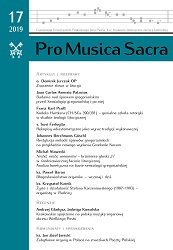
The primary objective of this research is to draw attention, by reference to the oldest manuscript sources, to the phonetics of the letter “h” in the words in which the sound occurs between two identical vowels. Medieval liturgical Latin was repeatedly the subject of various studies. With reference to the letter “h”, it was determined that it does not cause any sound, so it remains silent. There are, however, exceptions to this rule – in the words nihil and mihi, which present spelling variants of nichil and michi caused by phonetic requirements. The starting point for the research is the assumption that various manuscripts belonging to the authenticum fontium gregorianorum, each time when the letter “h” appears between two identical vowels in the word, should, due to its soundlessness, combine two syllables and assign one undivided neum to them (like this happens for example in the words tuum, meae, si iniquitatis). The same phenomenon should take place in the words nihil and mihi. The analysis based on manuscripts from various neumatic families, namely Ein, Bab1, Gal1, Gal2, Gal3, Eli, Lan, Van2, Klo1, Cha1, Lav, Dij, Ben5, Yrx, Alb, Har1–2, proves that in the presence of two identical vowels and the letters “h”, different scribes in most cases divide the word into two syllables and write two independent neums. In addition, in a large group of manuscripts from the above quoted, with great regularity, there is a two-syllable writing of the words nichil and michi with the letter “ch” in place of “h”. This phenomenon, connected both with spelling and phonetics, proves that there could exist the practice of pronouncing “ch + I” as “ki”. Conversely in the word vehementer – most of the manuscripts attribute only one neum to the two initial syllables; none of the manuscripts writes vechementer, but some give the version of the word veementer (without the “h”). Also, the case of syneresis of ve-he- occurs regularly. All cases from the Graduale Romanum repertoire in which the words nihil or nichil (6 times), mihi or michi (70 times), vehementer (6 times), vehementis and comprehendam (2 times), apprehende (2 times), apprehendite (once), irreprehensibilis (2 times), have been examined in the light of the neumatic manuscripts. Particular attention was paid to the compositional contexts of neuma torculus initio debilis. As a result of the analysis, it was proved with a very high probability that the words nihil and mihi, even if writed using the letter “h”, were pronounced like nichil and michi.
More...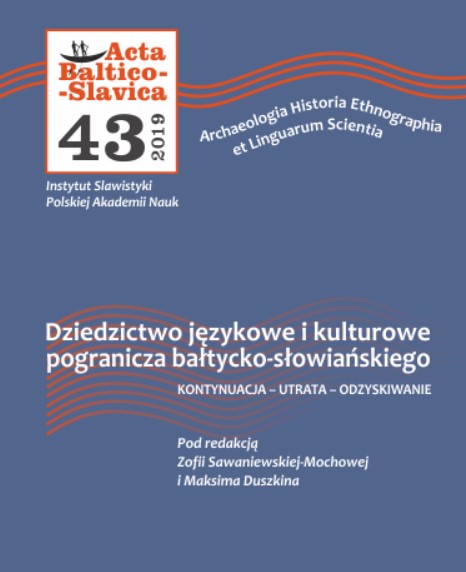
As a result of application of the principles of multidimensional dialectology in Lithuania in the early twenty-first century, the research discourse of Lithuanian dialectologists now covers not only the traditional dialects, but also several local language variations that continuously interact and compete with one another in the same geographical area. The processes of convergence and divergence of language variations are addressed in a more comprehensive manner, not only analysing the linguistic characteristics of a local variation, but also looking into the language environment (or language landscape) and the attitude of the local populace (especially the young generation) towards their linguistic homeland. The linguistic study presented in this article was conducted in the Žeimiai area in the Kaunas-Jonava region in 2015–2017. It involved interviews with 21 members of three generations of one family (15 females and 6 males aged 19 to 95), over 20 hours of audio material in total; the informants also answered a sociolinguistic survey. The description and analysis of collected material involved: (1) analysis of the degree of viability of language variations used in the area on the basis of a model of sociocultural networks of Žeimiai town; (2) description of the linguistic landscape of the region; (3) description of the linguistic behaviour and attitudes towards local variations on the basis of informants’ replies in the sociolinguistic survey; (4) analysis of salient phonetic features of the informants’ speech that best describe the local language variation in use. The collected and processed material allowed the researchers to investigate the competitiveness of local language variations in this area, identifying ones that have greater demand with representatives of different generations compared to others (cf. Inoue, 1997, p. 41).
More...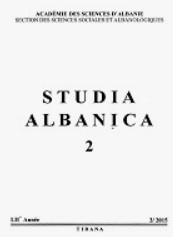
Dans la division dialectale des dialectes albanais, la variété tchame fait partie, avec la labe, dans la subdivision tosque du sud. Le parler tchame est géographiquement situé dans la partie la plus méridionale de l’espace compacte albanophone. Tels que définis par les dialectologues ainsi que par les données de la tradition orale des résidents tchames autochtones, les confins de la Tchamerie et du parler de ses habitants s’étendent “de la rivière de Shalës (rivière de Pavel) au nord, aux montagnes de Kurilla et l’Échelle de Paramithia à l’est, jusqu’à la baie de Preveza dans le sud” . La géographie physique du terrain montagneux et le manque de ponts de communication avec les autres provinces de l'Albanie ont amené la Tchamerie à développer des relations socio-économiques principalement à l’intérieur de la province.
More...